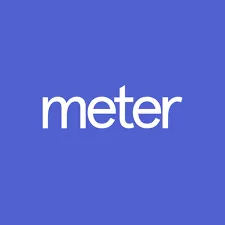Infrastructure as a Service (IaaS)
Scalable. Secure. On-Demand.
Reimagine your IT infrastructure. Infrastructure as a Service (IaaS) empowers your business with instant access to enterprise-grade computing, storage, and networking resources—without the burden of managing physical hardware.
What is IaaS?
Infrastructure as a Service (IaaS) is the foundational layer of cloud computing. It allows businesses to rent IT infrastructure—servers, virtual machines (VMs), storage, and networks—delivered over the internet.
Instead of maintaining costly on-prem hardware, IaaS gives you flexible, pay-as-you-go access to everything you need to run applications, host websites, manage data, and more. You install, configure, and control your software, while the infrastructure is provisioned, scaled, and maintained by leading cloud providers like:
Amazon Web Services (AWS)
Microsoft Azure
Google Cloud Platform (GCP)
Why Move to IaaS?

Cost Savings
Avoid large upfront investments in hardware and ongoing maintenance. IaaS shifts you to an operational expense model, so you only pay for what you use.

Faster Time to Market
Rapid provisioning lets you build, test, and deploy applications in hours—not weeks.

On-Demand Scalability
Easily scale resources to match spikes in usage or project demands—then scale back when needed.

High Availability
IaaS ensures access to apps and data 24/7, supporting remote workforces and disaster recovery plans.
IaaS Use Cases
Test & Development: Spin up dev environments instantly and accelerate product cycles.
Website Hosting: More flexibility and affordability than traditional web hosting.
Backup & Disaster Recovery: Simplify storage planning and scale backup as data grows.
Web Applications: Support apps with high availability and scalable compute.
High-Performance Computing (HPC): Tackle complex simulations, modeling, and analysis.
Big Data Analytics: Uncover insights from massive datasets with cost-effective power.
Security Considerations
Security in the cloud isn't automatic. While providers secure the infrastructure, your organization must secure access, data, and workloads. Challenges include:
Misconfigured identity & access policies
Encryption vulnerabilities
Insider threats from privileged access
Resource hijacking (e.g., crypto mining, botnets)
Solution: We help you implement a layered, purpose-built cloud security strategy—integrating native provider tools with next-gen solutions. From identity governance to workload protection, we’ll ensure your IaaS environment is fortified.
Infrastructure as a Service FAQs
What is virtual machine provisioning in IaaS?
Virtual machine provisioning in IaaS involves creating and configuring virtual instances to run applications and services. It automates the allocation of compute resources, storage, and network settings. Tools like Terraform and Ansible streamline this process, enabling rapid deployment and scaling. Provisioning includes selecting an operating system, configuring security policies, and installing necessary software. Users can define resource requirements, ensuring optimal performance and cost-efficiency. Efficient VM provisioning minimizes downtime, accelerates development cycles, and enhances the flexibility of cloud infrastructure.
What is scalability in IaaS?
Scalability in IaaS refers to the ability to dynamically adjust computing resources based on demand. It allows organizations to scale up by adding more virtual machines, storage, or network capacity during peak usage, and scale down during low demand periods. Auto-scaling features, offered by platforms like AWS Auto Scaling and Azure Scale Sets, automate this process. Scalability ensures consistent performance, cost efficiency, and resource optimization. It supports business growth and fluctuating workloads without the need for significant upfront investments in physical infrastructure.
What is multitenancy in IaaS?
Multitenancy in IaaS enables multiple customers, or tenants, to share the same physical infrastructure while maintaining data isolation and security. It maximizes resource utilization and cost efficiency for cloud providers and users. Each tenant operates in a logically isolated environment, ensuring that one tenant's activities do not affect others. Technologies like virtualization and containerization facilitate multi-tenancy. Effective multi-tenancy management includes implementing strict access controls, encryption, and monitoring to prevent unauthorized access and ensure compliance with security standards.
What is a hypervisor?
A hypervisor, or virtual machine monitor (VMM), is a software layer that enables the creation and management of virtual machines on a physical host. It abstracts hardware resources, allowing multiple VMs to run simultaneously on a single server. Hypervisors can be classified as Type 1 (bare-metal) or Type 2 (hosted). Type 1 hypervisors, like VMware ESXi and Microsoft Hyper-V, run directly on the hardware, offering better performance. Type 2 hypervisors, like Oracle VirtualBox, run on a host operating system. Hypervisors are fundamental to IaaS, enabling virtualization and resource efficiency.
What is elasticity in IaaS?
Elasticity in IaaS refers to the ability to automatically scale computing resources up or down based on demand. It ensures that applications can handle varying workloads without manual intervention. Elasticity leverages auto-scaling features provided by cloud platforms, such as AWS Auto Scaling and Azure Virtual Machine Scale Sets. Resources are dynamically allocated and deallocated, optimizing performance and cost-efficiency.Elasticity supports high availability and fault tolerance by distributing workloads across multiple instances. It enables organizations to respond quickly to changing business requirements and maintain seamless user experiences.
What is load balancing?
Load balancing in IaaS distributes incoming network traffic across multiple servers to ensure optimal resource utilization, minimize response times, and prevent any single server from being overwhelmed. Load balancers, such as AWS Elastic Load Balancer and Azure Load Balancer, monitor server health and reroute traffic to healthy instances. They support various algorithms like round-robin, least connections, and IP hash.

What is resource pooling?
Resource pooling in IaaS involves aggregating computing resources such as CPU, memory, and storage to serve multiple clients dynamically. Virtualization technologies enable the creation of virtual machines and containers that share underlying physical resources. Cloud providers like AWS, Azure, and Google Cloud manage these pooled resources, allocating them based on demand. Resource pooling ensures efficient utilization, scalability, and cost-effectiveness. It supports multi-tenancy, allowing multiple customers to share the same infrastructure while maintaining logical isolation and security. Optimal resource pooling enhances flexibility and performance in cloud environments.
What is automated scaling?
Automated scaling in IaaS dynamically adjusts the number of active instances based on real-time demand. It includes vertical scaling, which increases resource capacity of existing instances, and horizontal scaling, which adds or removes instances. Tools like AWS Auto Scaling and Azure VM Scale Sets monitor performance metrics and trigger scaling actions. Automated scaling ensures applications maintain optimal performance and availability during traffic spikes or drops. It reduces manual intervention, minimizes costs by efficiently using resources, and enhances the user experience by preventing latency and downtime.
What is infrastructure management?
Infrastructure management in IaaS involves overseeing and optimizing virtualized computing resources, including servers, storage, and networking. Tools like AWS Management Console, Azure Portal, and Google Cloud Console facilitate resource provisioning, monitoring, and scaling. Automation scripts and IaC frameworks, such as Terraform and Ansible, streamline deployments and updates. Effective management ensures high availability, performance, and security. Administrators must constantly monitor resource usage, apply patches, and enforce policies to maintain an efficient and secure infrastructure.
What is a hybrid cloud in the context of IaaS?
Hybrid cloud in the context of IaaS combines on-premises infrastructure with public and private cloud resources, providing a unified and flexible environment. Organizations can seamlessly extend their data centers to the cloud, leveraging services like AWS Outposts, Azure Arc, and Google Anthos. Hybrid cloud enables workload portability, optimized resource utilization, and disaster recovery. It supports data sovereignty and regulatory compliance by allowing sensitive data to remain on-premises while offloading less critical workloads to the cloud.
What is a bare metal server?
A bare metal server in IaaS provides dedicated physical hardware without a hypervisor layer, offering direct access to the underlying resources. Providers like AWS (EC2 Bare Metal), IBM Cloud, and Oracle Cloud offer bare metal servers. They deliver higher performance, lower latency, and enhanced security compared to virtualized instances.Ideal for high-performance computing (HPC), big data analytics, and applications requiring specific hardware configurations, bare metal servers allow for full customization and control. Users can install hypervisors or run container orchestration platforms like Kubernetes directly on the hardware.
Ready to Scale?
Let’s Build Your IaaS Plan

Whether you're migrating from a legacy data center or launching a new digital initiative, our team helps you select, deploy, and optimize the right IaaS solution. As a trusted partner with access to top providers, we simplify the process from start to scale.























